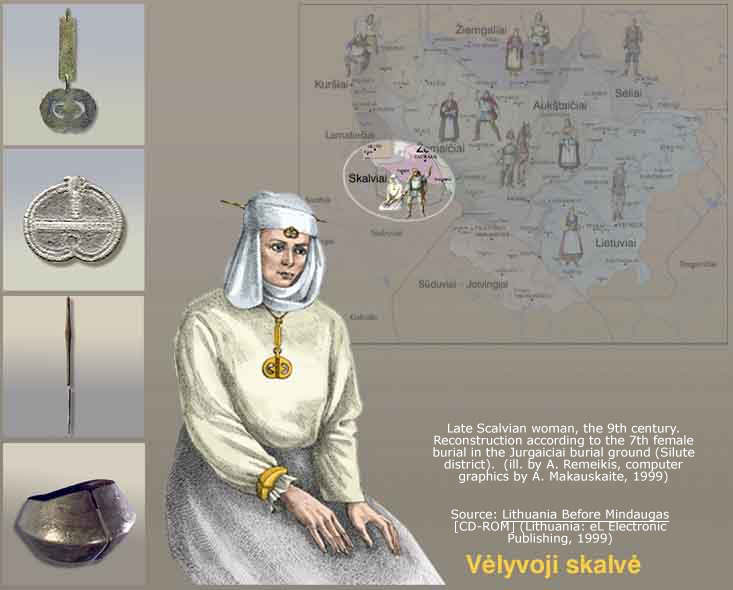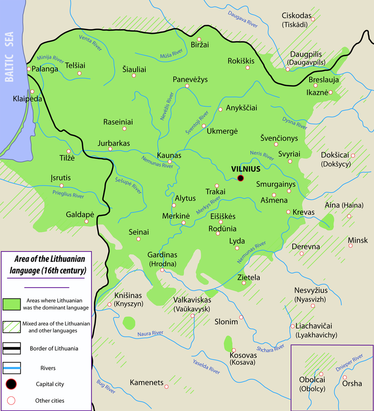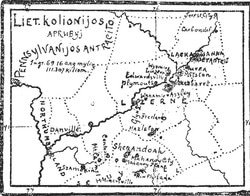Lithuanian Emigration
|
Confluence of the Sesupe & NemunasThe land below the mouth of the Sesupe once belonged to the now extinct Baltic Scalvians. They were subjugated by the Teutonic Knights and disappeared along with other Old Prussian and Baltic tribes.
Map of Lithuanian RiversNatural resources always drew beings to the rivers.
The source of food and transportation, cities line their path like beads. Margaret Jeskaviciute lived along the Nemunas in Seponu then Birstonas. She oared down its waters to purchase salt for her family, once, on the way back, getting stuck as the river began to freeze. Her uncle managed to draw the boat back into shore and saved her frostbitten hands. The salt springs of Birstonas drew people to the area for health treatments at spas and sanitariums where she was able to begin saving the money to join her brother already in Pennsylvania. |
Confluence
|
|
|
"Like rain in the summer or snow in winter" Lithuanians came to America.
Vincas Kudirka
Rastai, Tilze, 1909, III, p. 159
Reasons for Emigration Specific to Lithuania
Nations that condoned slavery diminished throughout the 19th century. In 1861, three years before the Emancipation Proclamation, Russia, who controlled Lithuania during the 19th century, freed serfs who had previously been sold with the land they tended. The serfs had to pay their landlords, "owners," for their financial loss within two years. For most, that was impossible. At the end of that time they revolted - The January Uprising of 1863, like the Kosciuszko Uprising, or the November Uprising of 1830 failed miserably. The repercussions of that uprising were particularly horrific leading to increased migration. Railroads and shipping companies were on the increase with the introduction of the steam engine. People fleeing for their lives had better avenues of escape -- and did.



